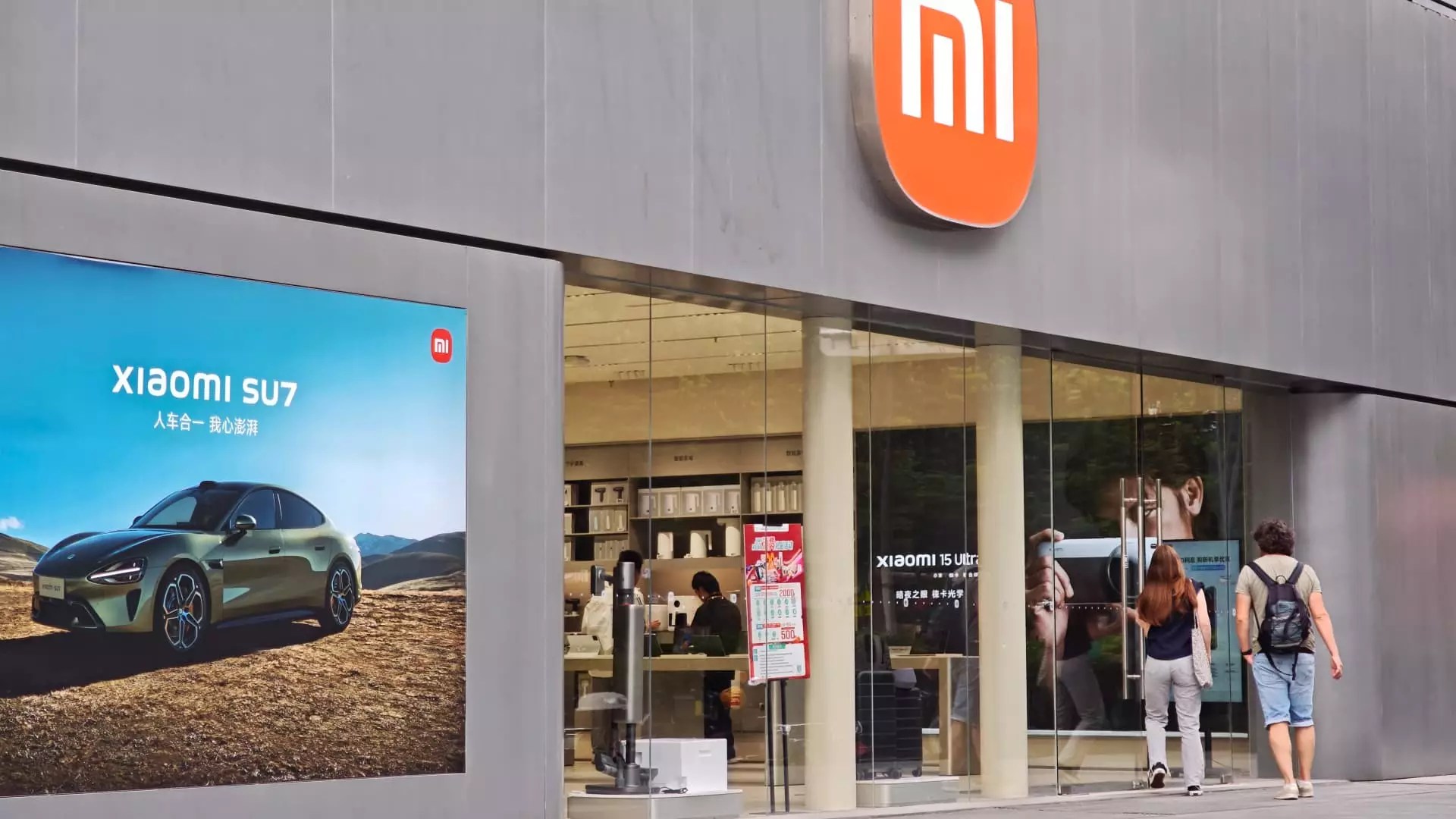In a striking turn of events, Xiaomi has been able to announce record profits for the second consecutive quarter, a feat that is both surprising and impressive in today’s fiercely competitive smartphone market dominated by giants like Apple. While Apple’s brand commands a level of loyalty and prestige that Xiaomi has yet to cultivate, the Chinese company is making significant strides in carving out its niche. Smarter investment in technology and a keen focus on market demands have propelled Xiaomi into a position where it not only competes but often outperforms expectations, showcasing a savvy business acumen that is hard to dismiss.
Financial analysts have reacted positively to Xiaomi’s quarterly earnings report released on May 27, pushing the company’s stock price upwards significantly. This response is not just a cursory nod to impressive numbers but a deeper acknowledgment of Xiaomi’s changing face in the technology landscape. Unlike Apple, which has found itself embroiled in political and operational turmoil due to foreign scrutiny and supply chain issues, Xiaomi has adopted a more resilient approach that focuses on innovation and adaptability.
The Numbers Speak Volumes
Xiaomi reported an astonishing adjusted net income of 10.68 billion yuan—or $1.48 billion—outstripping market expectations that had set the bar at 9.48 billion yuan. Analysts from Jefferies have raised their price target for Xiaomi’s stock, projecting an impressive upside of over 43%. More than just vanity metrics, these numbers illustrate the firm’s robust operational strategy and its ability to navigate the complexities of the market.
It’s noteworthy that while Xiaomi’s smartphone revenue comprises nearly 40% of its total revenue, the company is cleverly diversifying its portfolio through its artificial intelligence-powered appliances—denoted by the term “AIoT”—which account for around 22%. This diversification bodes well as consumers increasingly gravitate towards smart technologies, allowing Xiaomi to capture new revenue streams that are less reliant on the saturated smartphone market.
A Competitive Edge in the High-End Market
One significant aspect that separates Xiaomi from its competitors is its venture into the electric vehicle sector. While Apple appears to have abandoned its ambitious plans for an electric vehicle, Xiaomi is set to roll out its YU7 electric SUV, projected to launch officially in July 2025. Not only is this initiative a testament to the company’s growth mindset, but it also positions Xiaomi favorably against not just traditional auto manufacturers, but also tech companies that are making strides in this space.
Analysts are optimistic about the YU7, with Morgan Stanley stating that successful sales could benefit Xiaomi’s profit margins significantly. High-priced vehicles often reflect a company’s brand equity and commitment to quality—areas where Xiaomi is making substantial inroads. This promising new venture emphasizes the company’s intention to move beyond merely being a smartphone manufacturer and into a robust technology ecosystem that appeals to consumers’ evolving needs.
Challenging Apple: Perception vs. Reality
As Xiaomi pushes forward, one can’t help but scrutinize the stark contrasts in market positioning between it and Apple. Despite Xiaomi’s burgeoning market share in China and broader expansion plans, perceptions rooted in brand prestige and quality continue to favor Apple. However, with Xiaomi’s effective strategies to counterbalance its perceived inferiority, it’s positioning itself as a legitimate competitor in more premium segments of the market.
Xiaomi’s release of the Xring O1 chip, which is designed to power its forthcoming smartphone model, exemplifies its aggressive strategy to compete at high-quality performance benchmarks that Apple has traditionally dominated. Lei Jun, the company’s CEO, even claimed the Xring O1 outperforms Apple’s A18 Pro. While such benchmarks are subjective and often influenced by marketing hype, they underscore Xiaomi’s intent to disrupt established norms and prove that quality and affordability can coexist.
The Road Ahead: A Landscape of Opportunity and Risks
While the outlook for Xiaomi may appear rosy, several analysts have exercised caution, pointing out potential slowing growth in certain categories. JPMorgan’s comparison of Xiaomi’s ecosystem-related revenue growth with that of Apple highlights a different set of challenges. If Xiaomi is to maintain the upward trajectory it has established, it must continue to innovate while also navigating the intricacies of service-based revenue that have been crucial for Apple’s success.
In the rapidly evolving tech landscape, Xiaomi’s agility and willingness to adapt are significant assets. The question remains whether it can sustain its momentum against the giants of the industry, particularly in a world where consumers are increasingly looking for not just hardware, but an entire experience. Understanding this nexus between product offerings and consumer behavior will determine if Xiaomi can convert its promising financial metrics into long-term stability and brand loyalty.


Leave a Reply